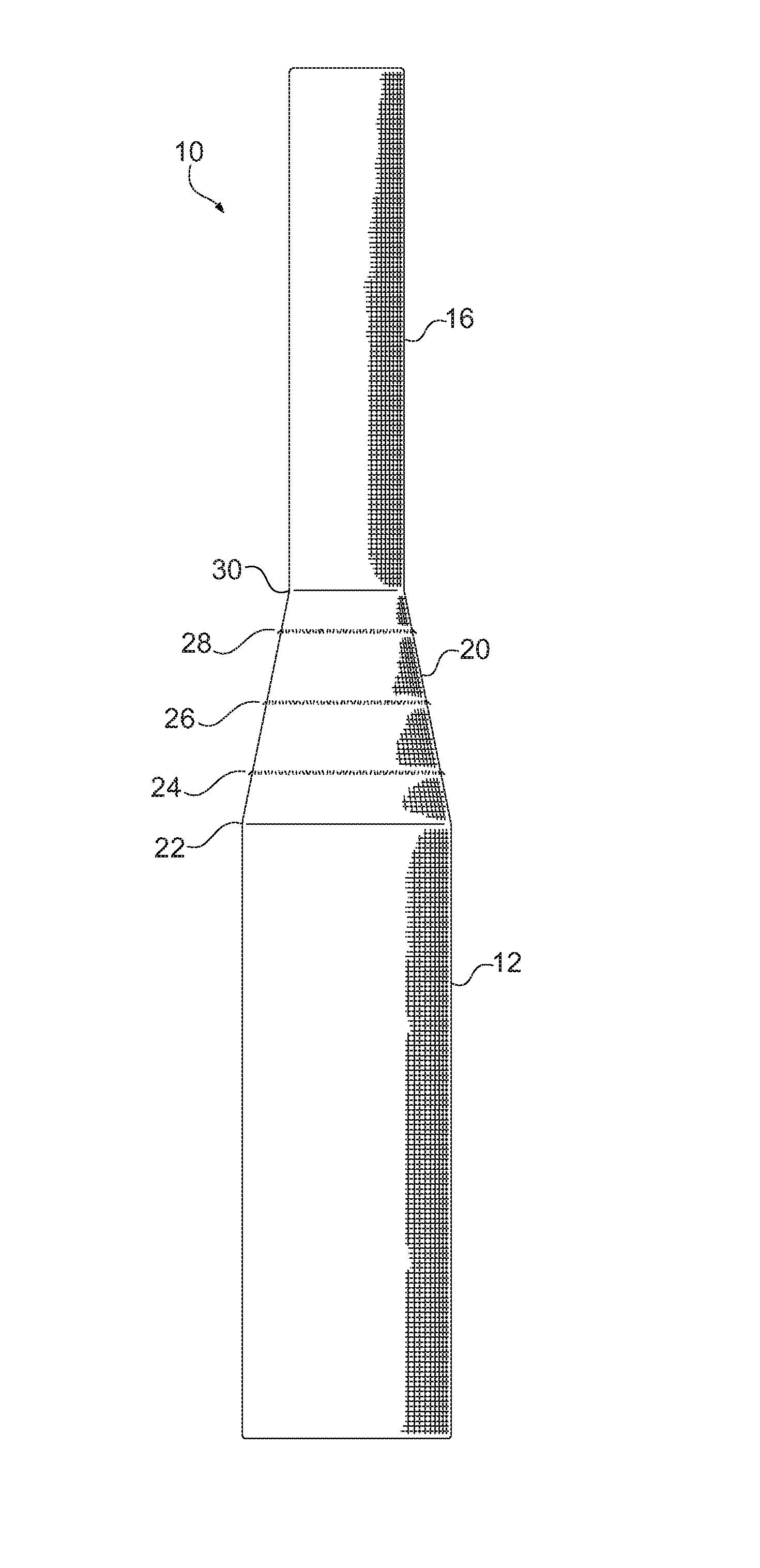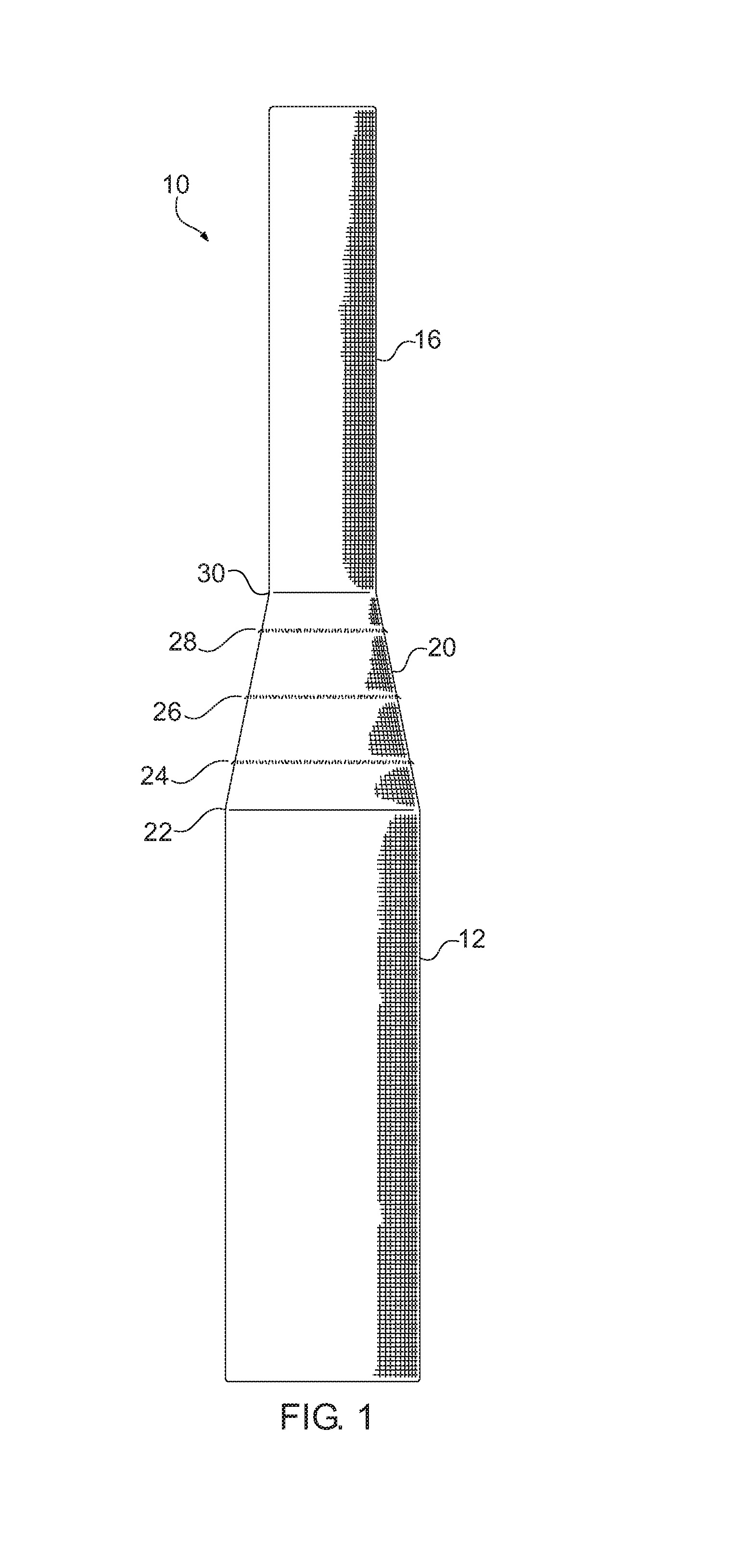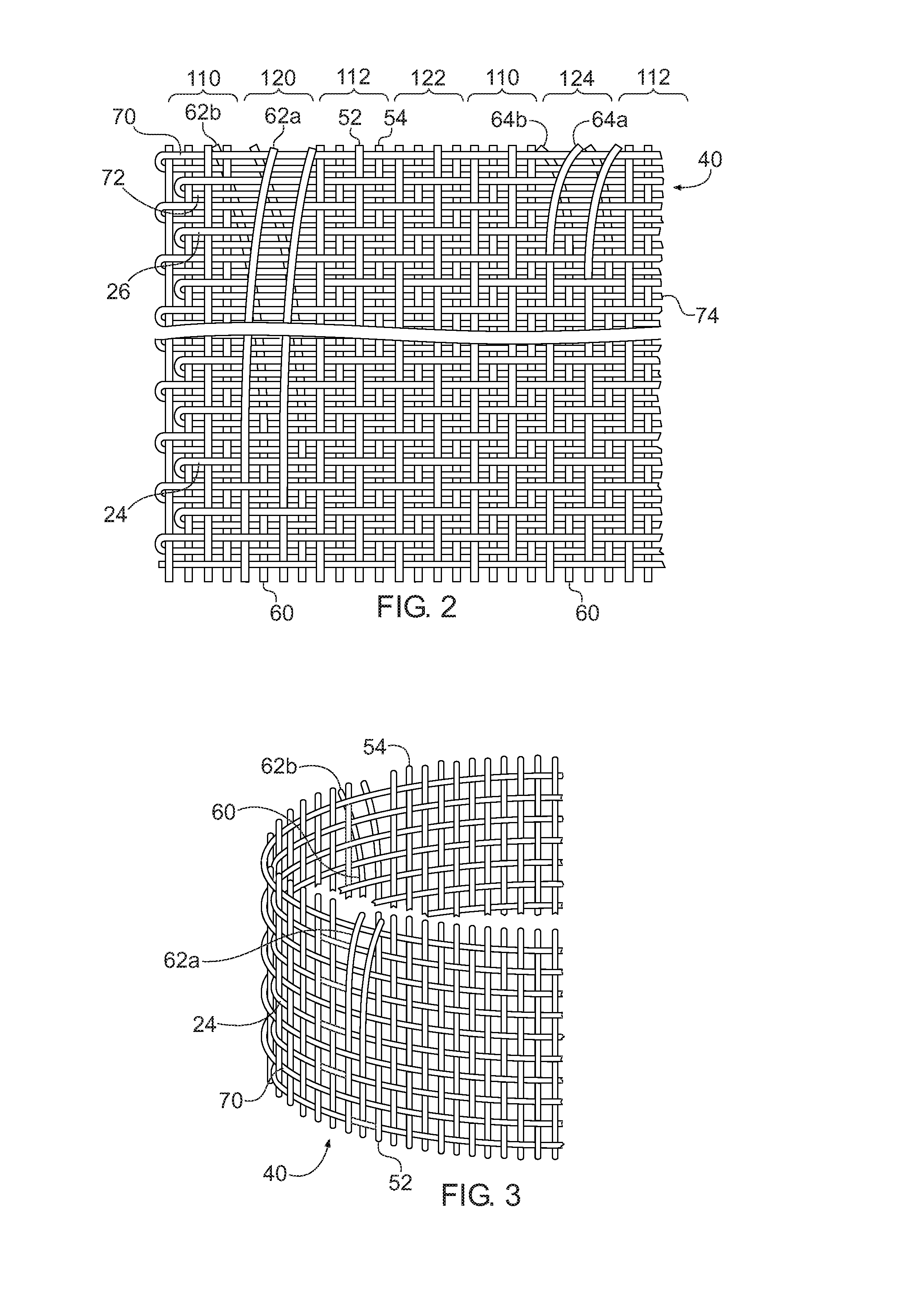Tapered tubular implant formed from woven fabric
a technology of woven fabric and tubular implants, which is applied in the field of woven implants to achieve the effect of improving the quality of woven materials
- Summary
- Abstract
- Description
- Claims
- Application Information
AI Technical Summary
Benefits of technology
Problems solved by technology
Method used
Image
Examples
example 1
[0056]Referring now to FIGS. 7A, 7B and 8, an exemplary weaving process is described for forming a tubular graft such as the graft illustrated in FIGS. 1, 2 and 4. The graft is a 28 mm×16 mm graft in which the first section 12 is substantially cylindrical having a 28 mm diameter and the second section 16 is substantially cylindrical having a 16 mm diameter. The tapered section 20 tapers at a substantially uniform rate from the first section 12 to the second section 16.
[0057]The fabric comprised 900 warps yarns including 500 primary yarns that were woven throughout the length of the graft and 400 supplementary yarns that were woven in the first section 12 and then gradually dropped in the tapered section 20. The 400 supplementary yarns were not woven into the second section 16.
[0058]The primary yarns were spooled on a first warp beam and the supplementary yarns were spooled on a second warp beam. The 900 warp yarns were drawn through twenty harnesses using a straight draw. The 500 pr...
example 2
[0071]Referring now to FIG. 9, a second graft is designated generally 210. The graft 210 is a bifurcated graft having a body 212 that bifurcates to form two branches 216, 218. The body 212 is generally cylindrical and tapers at tapered section 214 from a first diameter to a smaller second diameter. From the reduced diameter end, the graft branches into the first and second branches 216, 218.
[0072]As can be seen in FIG. 9, during weaving of the tapered section 214 a plurality of the warp yarns are dropped around the graft so that the dropped yarns protrude from the surface of the graft. As in the previously described graft 10, the dropped yarns of the bifurcated graft 210 are spaced apart around the circumference of the graft.
[0073]The bifurcated graft 210 can be utilized in a variety of applications. For instance, the bifurcated graft was formed as a woven stent graft. The body 212 is a 36 mm aortic portion and the two branches 216, 218 form two 14 mm iliacs. The graft 210 is woven ...
PUM
 Login to View More
Login to View More Abstract
Description
Claims
Application Information
 Login to View More
Login to View More - Generate Ideas
- Intellectual Property
- Life Sciences
- Materials
- Tech Scout
- Unparalleled Data Quality
- Higher Quality Content
- 60% Fewer Hallucinations
Browse by: Latest US Patents, China's latest patents, Technical Efficacy Thesaurus, Application Domain, Technology Topic, Popular Technical Reports.
© 2025 PatSnap. All rights reserved.Legal|Privacy policy|Modern Slavery Act Transparency Statement|Sitemap|About US| Contact US: help@patsnap.com



